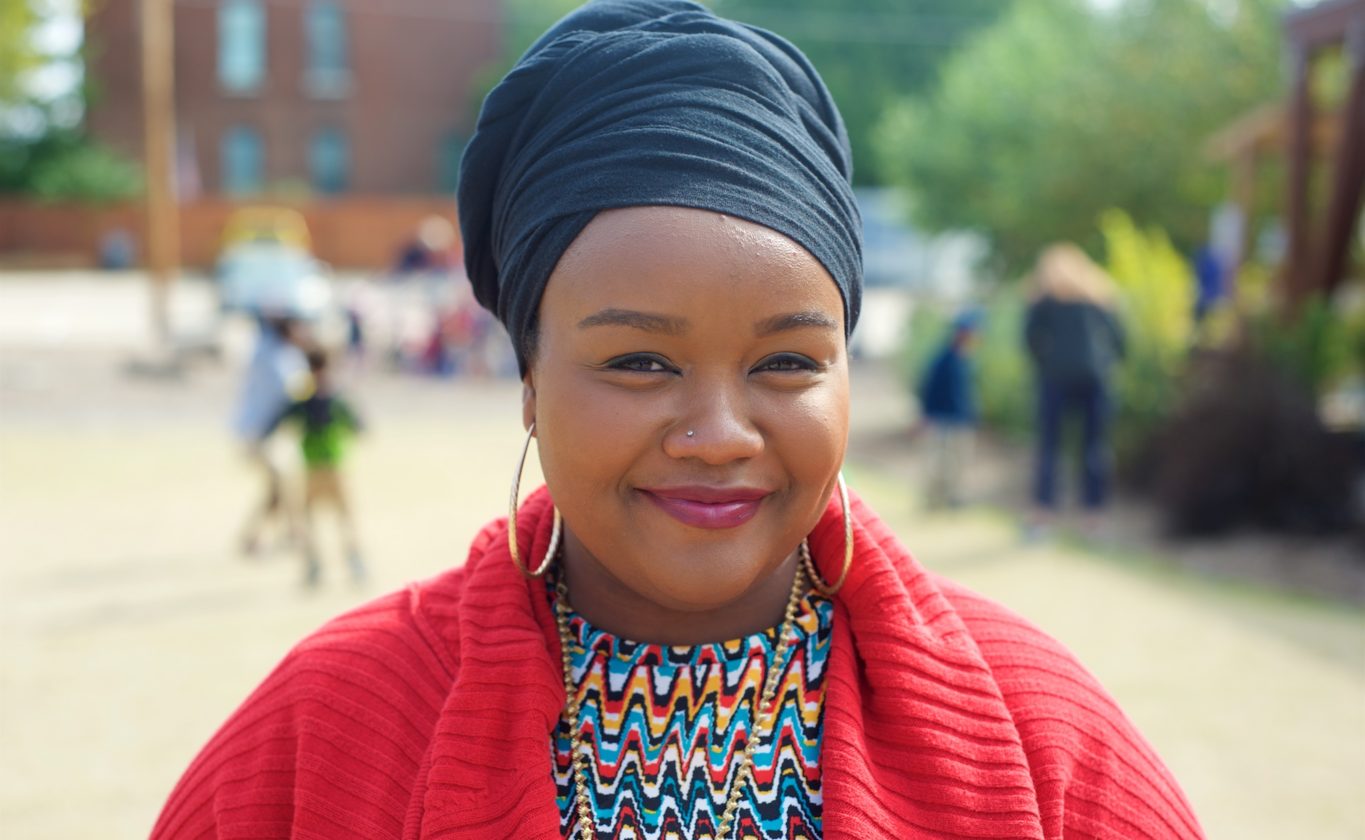I show up every day and I fight my hardest to contribute. There aren’t any Montessori schools in St. Louis I know of that have a director or an administrator who does community engaging, outreach coordinating, social justice, and Racial Equity. Before I took this position, I was a Montessori teacher for a school in Ballwin. Before that, I did my student teaching at a school in Creve Coeur. They were both private schools in a different world from here. I was actively seeking this. I didn’t know how it was going to happen or what it was going to look like, but I knew I had to put together my background as an educator and my personal passion for social justice. So, after I graduated with my Master’s in education in early 2016, I started looking for jobs. The opportunity to be the Director of Community Engagement and Racial Equity at Montessori popped up and I thought it was a joke. I was like, “God, you’re funny!” Then I applied, along with about 200 other people. When I got it I thought, “Wow, this was in the stars.”
My position at work is the result of a call to action.
My position at work is the result of a call to action. School leaders, parents, and other members of our community worked together tirelessly on creating their strategic framework that is the declaration of City Garden’s mission statement about who we are and what we value. They said, “We need a person who does this full-time.” They felt that if they were serious about this, they needed to have an office that contributes to the equity lens. My biggest fear was that people would think that I was too young. I’m not quite 30, and typically I have to dress up because if I don’t people will think that I’m a child walking around the hallways. I get carded for everything, even PG-13 movies. Honestly, sometimes I wonder if people take me seriously because there’s a bias towards young people in this profession.
“What’s the nicest compliment you’ve gotten from someone because of the work that you’ve done?”
There’s a woman who told me she was very proud to see an authentic Black woman doing this job. You wouldn’t think that that was a compliment, because, what does that mean? “What makes you think I’m authentic?” Then again, that was great because it’s something I’ve struggled with, professionally and personally. In different professional settings, people have felt comfortable enough telling me that they don’t think that I’m “Black Black.” I don’t need to go into all of what “Black Black” means, but I never took that as a compliment. So, to hear a woman who is highly involved at the school and in the neighborhood tell me, “I’m very thankful to see you here as an authentic woman of color who is confident and is giving it your all,” I was like, “Thank you. Thank you!” That was very encouraging as well as people saying, “Based on what I’ve heard about you, looks like you’re the person for the job.” I have a different style than some of the others here, but I think that that’s what makes us stronger.

Faybra Hemphill, photos by Lindy Drew
My work in the school is three parts. The first is community engagement within the scope of racial inclusion, but also cultural inclusion and diversity awareness. I work with the non-academic staff on contributing to our diversity programs and community forums by pulling together different events and programs and advertising it at the school. I contribute to the newsletter that we have twice a month to let people know what’s happening around town, what is free of charge, what they can do with their children that’s an additional educational opportunity to supplement diversity awareness. And I collaborate with community partners and other entities with similar values, to advocate for what we need, and also for what the families outside of the school’s walls need when they’re making decisions about new development or programs. I reach out to other schools and educational leaders who have a similar passion for equitable change and systemic growth and invite them to continue their journey in partnership with us. Our school community functions as a member of the broader community; it’s not just a “school in the neighborhood,” but a neighborhood school that is active and brings everyone together.
Another part of what I do is policy analysis. We created a Racial Equity Impact Assessment (REIA) similar to some pre-existing assessments that have been used on a large scale. After tailoring an assessment to meet our needs, I performed assessments on each new policy and major program. The REIA identifies the stakeholders, and evaluate how policies may affect different demographics at our school, especially the Black and Brown community. Ultimately, the REIA asks, “What does it do to contribute to the school climate within the scope of equity?” There is a new social media policy for faculty and staff, which we felt was important to include because social media is a big part of how people communicate now. We do want faculty and staff to have agency and they have freedom of speech, but we also want to make sure that if they choose to openly affiliate with the school on their social media pages, that they use a certain amount of respect and rapport for other groups of people when talking about political or social issues. The social media policy developed with an Anti-Bias and Anti-Racist (ABAR) lens advocates for positive dialogue and agreement to disagree in via social media when we’re on or off the clock. It’s a piece of accountability and protection.
Some formalities have to exist when it comes to making policies and new programs. If that is true, then we must apply an anti-bias, anti-racist lens when developing it from the beginning.
Another piece of accountability we’re developing still are modifications to the Adult Code of Conduct, which apply to faculty, staff, administrators, and governance. These changes are being added to further protect the rights and needs of our school community. A more tailored protocol for addressing interpersonal conflicts, a procedure for mediation referrals, and language surrounding support systems that address inequities or wrongdoings are included. This policy is something that’s going to be unique to us and, if City Garden should expand in the future, this would be the model used at our other schools. Some formalities have to exist when it comes to making policies and new programs. If that is true, then we must apply an anti-bias, anti-racist lens when developing it from the beginning. If we’re saying, “We’re anti-bias,” when we develop policies, hire faculty and staff, communicate with parents, and interact with the children, we should be doing self-assessment every step of the way.
We say that this is a part of our school’s culture; that being an anti-bias, anti-racist organization is what we exist to be.
The third part of what I do is professional development and teacher and staff support on special topics that relate to anti-bias and anti-racism education. Year-round, I also bring sustainable diversity and anti-racism training to the school. We have a collaborative with other institutions in the area that utilizes Crossroads Antiracism to facilitate frequent ABAR training workshops that are open to the community. All faculty and staff members are required to attend the formal ABAR training at least one time. I coordinate inter-group dialogues, facilitate ABAR-focused development meetings with faculty and staff each month, and, to continue growth, we’re scheduled to do consistent, ongoing caucusing on special topics about race as well as how we can make ourselves more effective as educators after working through some of our internalized stuff. We say that this is a part of our school’s culture; that being an anti-bias, anti-racist organization is what we exist to be. Therefore, if you’re going to be a part of this organization, you must participate in this professional development in order to be here and to be effective. We acknowledge that we have so much work left to do and that there are places that we have to be willing to go to dig even deeper than where we are now. You have to show up.
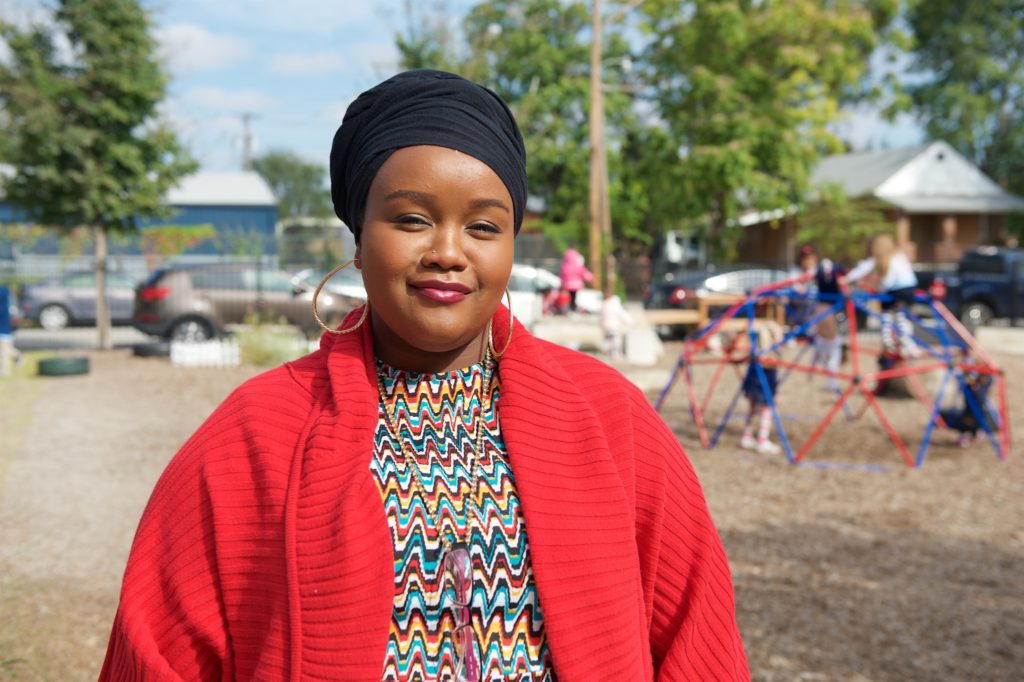
My biggest need to do the work I do would be for other people who are doing similar work to know that we are all in this together, that we have similar goals and needs, and that we have similar battles that are not about charter versus conventional versus Montessori. Whatever your method is, we still have the same battle. I realize that some of the things that have happened as far as the relationships between institutions happened long before I got here and other leaders of the schools got here. I don’t expect everybody to kiss and make up and fight this together overnight, but I do think that it would help if there was more unity amongst public schools, charter schools, and other Montessori schools. Specifically, the other Montessori schools. The fidelity to our method is crucial to our success. And to have other Montessori schools be invested in that with us and say, “Hey, we see that you all are dedicated to Montessori. This is what we can do to help to support you. We want to be better at being anti-biased and anti-racist. Can you support us in those efforts?”
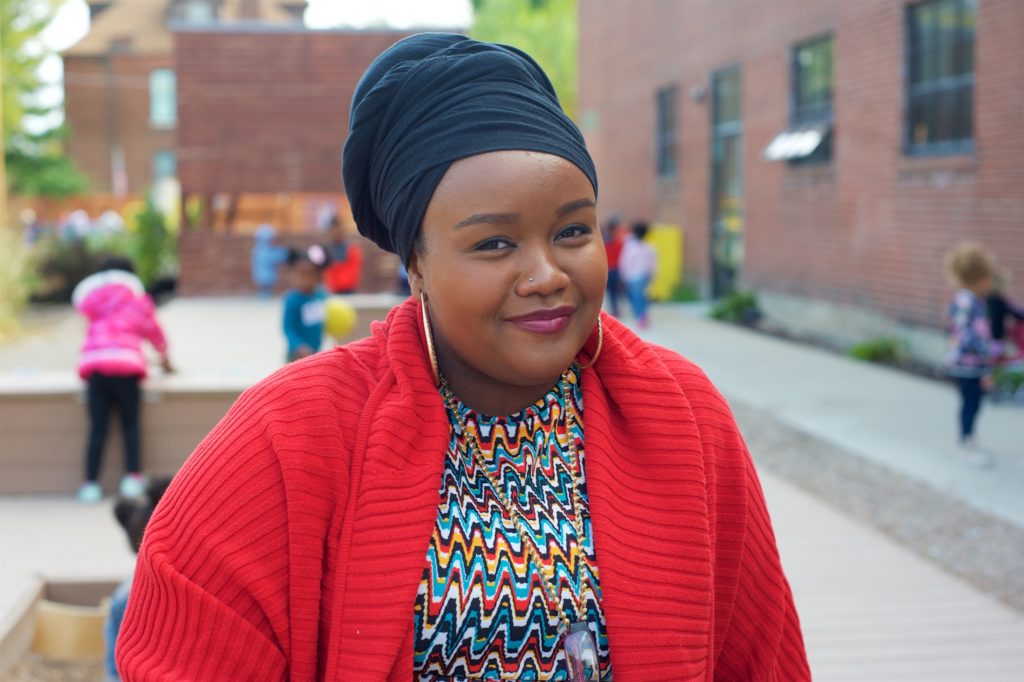
“How does using a Racial Equity lens ultimately affect the kids, especially in an educational system?”
The work I’m doing with teachers and with professional development – with the models we use, such as Anti-Bias Education by Derman-Sparks and Edwards and the National Education Association’s CARE model about achievement gaps, taking the ABAR lens and then creating a sustainable support system – have a direct effect on the children. Recently, when the Black teachers at the school did a demonstration for Black lives, the children’s eyes lit up like, “Wow! What is this?” Teachers went into their classrooms and had conversations about what was happening in the city and in the news and started talking. For parents to say, “We weren’t really talking about that at home, but my kid came home and said that they’re afraid for their Black friends’ lives and that’s a big deal to me. What can I do as a parent to keep this conversation going?” That was a giant confirmation that we are on the right track.
We got much more positive feedback than negative. Seeing the children just relax a little bit more, knowing that they have an outlet, they’re safe here, they have an opportunity to ask questions about policing, about race, racism, what it is, and how it can affect them in their lives and their relationships with other people – that’s going to be very important to their development and to their emotional intelligence as they get older. Understanding the different factors of your identity and what makes you who you are and what makes other people who they are, are important lessons to learn. Seeing the children let these things sink in and then using that to inspire them to go into their classrooms and want to learn more, I say we did our job.
Although race is a social construct that people made up, things we make up are very real and they affect us every single day.
It’s kind of a neat feeling, too, to know that you confronted the fear. There were some parents who, of course, needed some clarification as far as how they came into the dialogue. But the overarching feedback was that it was a good thing because some of the parents didn’t know how to start the conversation. They were thankful because that let them know, “Maybe it is time for me to start talking to my children about these very real issues that affect their lives.” To talk about race, the relationships between race and your education, between race and policing, between race and how the world is evolving, about race and the presidential election, about race and any given thing — although race is a social construct that people made up, things we make up are very real and they affect us every single day.
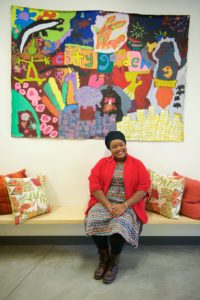 There’s a child in primary, Montessori’s pre-K, and every time I see her, her eyes just get so big. I didn’t know her before this, but one day she saw me and said, “You’re the lady.” I’m like, “Yeah. What lady?” She’s like, “You’re the lady that they talk about.” “What do they say?” “No, you’re the lady that’s like working here and you do stuff.” I’m like, “Yeah, I do.” She said, “I wish you were my mom.” “Aww, I’m sure you have a great mom.” “Yeah, I have a great mom, but you could totally be my mom too.” And she gave me a hug. Now when I see her, she still says, “You can be my mom.” That’s a big compliment for a small child to tell you that they like you, and they notice what you’re doing, and they like you so much that you could totally be their mom. She couldn’t put into all the words what exactly I do, but she knew that it was something important and she approved of it so much that I could totally be her mom. That’s excellent. I wish that I could have more interactions with the kids. A lot of what I do has to do with the adults. I work on helping out the adults because the adults must rebuild their foundation to best support their kids.
There’s a child in primary, Montessori’s pre-K, and every time I see her, her eyes just get so big. I didn’t know her before this, but one day she saw me and said, “You’re the lady.” I’m like, “Yeah. What lady?” She’s like, “You’re the lady that they talk about.” “What do they say?” “No, you’re the lady that’s like working here and you do stuff.” I’m like, “Yeah, I do.” She said, “I wish you were my mom.” “Aww, I’m sure you have a great mom.” “Yeah, I have a great mom, but you could totally be my mom too.” And she gave me a hug. Now when I see her, she still says, “You can be my mom.” That’s a big compliment for a small child to tell you that they like you, and they notice what you’re doing, and they like you so much that you could totally be their mom. She couldn’t put into all the words what exactly I do, but she knew that it was something important and she approved of it so much that I could totally be her mom. That’s excellent. I wish that I could have more interactions with the kids. A lot of what I do has to do with the adults. I work on helping out the adults because the adults must rebuild their foundation to best support their kids.
Some of us have to be here to fight for everybody else. Even if I have other opportunities to leave, and I have had other opportunities to leave, I see myself staying in St. Louis and doing this work.
There were plenty of times I wanted to leave St. Louis, but I did end up staying. I went to SLU for undergrad, and I went to UMSL for grad school. I’m “so St. Louis,” as they say. I’ve been here since day one. I take vacations sometimes, but there’s something to staying home. St. Louis has produced so many outstanding people across institutions, across racial lines. Very talented, multifaceted people. There are so many things going on here as far as all those “-isms” that push people away, that I just want to stay, be the best that I can be, and contribute because all of us can’t leave. Some of us have to be here to fight for everybody else. Even if I have other opportunities to leave, and I have had other opportunities to leave, I see myself in St. Louis doing my work. I walk through U City and see those stars and I’m like, “That’s us.” This city gave birth to those same people. The city that gave birth to me and my parents. I just want to stay here and fight for it.
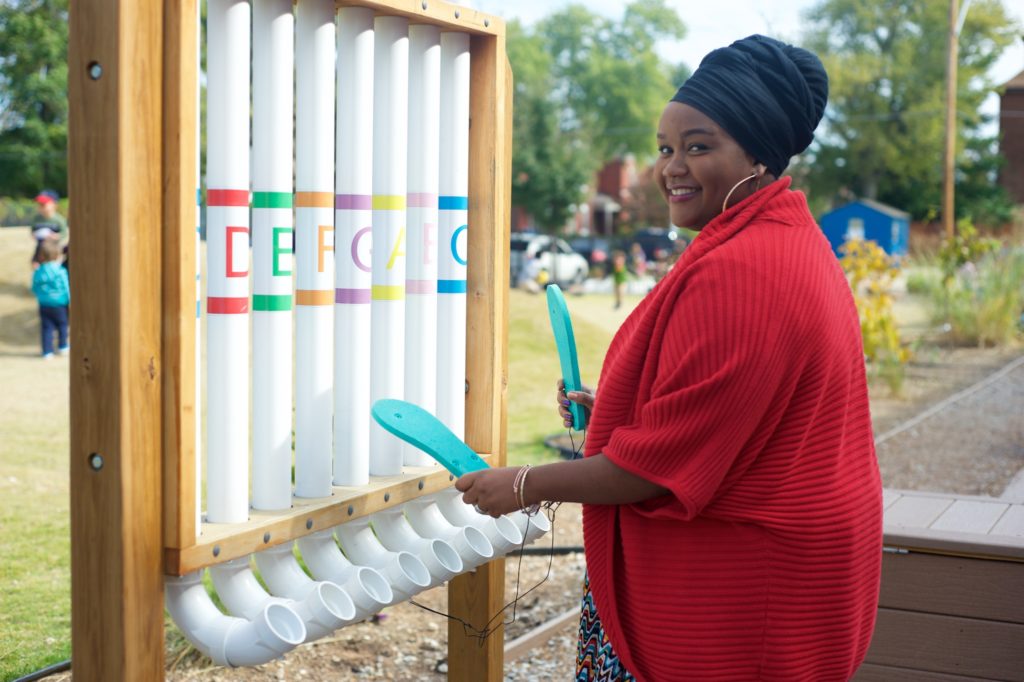
“What’s a way to include people who are so far from any of this work to reach out or at least tell them how important it is to take a step into this work?”
Dialogue. People actually getting a chance to sit down, and talk, and have a conversation about race and fairness. It’s going to be difficult and everybody’s not going to agree or understand. But just knowing that everybody comes into the dialogue knowing that you’re a good person with good intentions, and you’re still able to say, “This is how I feel about this and these are my questions,” just being willing to work it out, and then at the end of the day, if you have to agree to disagree, that’s fine, at least it’s all out on the table and you can start to say, “I really came to terms with this part of something that I wasn’t seeing.”
You can continue the journey after starting the conversation. That’s why caucusing is important. Every single institution – especially in education – teachers, administrators, and support staff should be having some type of professional development that includes racial identity caucusing. Cultural competency class is not enough. Diversity awareness is not enough. You have to have racial identity caucusing or some sort of counseling around racial healing, inter-group dialogue, or affinity groups. You have to have something that supports that internal work with racial identity. Otherwise, it’ll just be more of the same because people won’t understand the urgency of personal investment. It’s easy to just say, “It’s all systemic. It’s the system. The system is broken.” No, the system is working exactly the way it should. It’s working the way it was designed to work. People can create a new system. We can make a new machine and throw the other one out. The people need to understand their stake in it.
“What can I do?” That’s a good question, but I think better questions would be, “How do I fit into this? What contributions am I making? What contributions am I not making?”
A question that I get frequently from White folk who are new to understanding race and racism and its systemic nature is, “What can I do?” That’s a good question, but I think better questions would be, “How do I fit into this? What contributions am I making? What contributions am I not making?” But the “What can I do? What can I do? What can I do to fix this…?” You can do things and, of course, you can help out, but the self-evaluation piece is very important in this work. The first step is, “How do I fit into this?” What I’m learning with this work is that White folk and people of color have the opposite needs. White people need more support with understanding their personal stake, their personal experience with race, and understanding what race is and how it has impacted who they are and what they do. People of color typically need to understand the systemic nature of racism and that yes there are individuals who are racist, but that the machine has an input-output that has racial disparity as its nuts and bolts. And individuals could eventually take that out, right? Well, we have to be willing to work towards the understanding that we are powerful enough to impact policy and all sorts of other things. There’s a misconception that the new civil rights and social justice groups don’t have leadership, plans, or strategies. That is completely false. Use Forward Through Ferguson’s report and the calls to action and also the calls to action with Black Lives Matter and other groups to gain understanding and inspiration to act. These groups do have leadership, they do have demands and strategies, so you need to get with the program. Don’t wait for change to come from others. Educate yourself and empower yourself.
-Faybra Hemphill, Director of Community Engagement and Racial Equity at City Garden Montessori School
—
*While interviewing Faybra, here are some of the books she had on her desk and recommended for further reading:
Davis, Bonnie. (2012). How to Teach Students Who Don’t Look Like You: Culturally Responsive Teaching Strategies. Thousand Oaks, CA: Corwin.
Delgado, Richard, & Stefancic, Jean. (2012). Critical Race Theory: An Introduction. (2nd ed.). New York, NY: New York University Press.
Irving, Debbie. (2014). Waking Up White, and Finding Myself in the Story of Race. Cambridge, MA: Elephant Room Press.
Tatum, Beverly. (2008). Can We Talk About Race?: And Other Conversations in an Era of School Resegregation. Boston, MA: Beacon Press.
Tatum, Beverly. (1997). Why Are All the Black Kids Sitting Together In the Cafeteria: And Other Conversations About Race. New York, NY: Basic Books.

